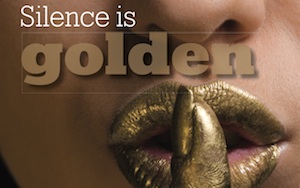As the title of James Pilditch’s seminal book tells us, packaging is The Silent Salesman. That was written 50 years ago but Pilditch’s assertion still cuts to the crux of consumerism. Packaging is the link between brand and consumer – without saying a word it speaks to us, influencing our purchasing decision.
Packaging is at its most loquacious in the augmented, parodied world of gifts. Here, at the luxury end at least, the concept of a ‘design budget’ sometimes seems as arbitrary as the prices attached to the bottles. Luxury products are an opportunity to stretch a brand’s legs and go on a journey. Indeed, that sentence could have been taken from the minutes of one of Diageo’s creative meetings. “We see John Walker & Sons Odyssey as the next step in our luxury journey,” says James Thompson, chief marketing officer of Diageo Asia Pacific, “and we believe the integration of heritage and progress, provenance and innovation will make it of the utmost interest to luxury connoisseurs in this region.”
There are new ramped-up editions of everyone’s favourite scotch. And why not? The much-heralded growth of the category isn’t down to run-of-the mill lines. “There is an insatiable demand for super-deluxe spirits globally, and particularly in Asia Pacific,” says Thompson. “Globally, net sales for scotch whisky are up 12%, with most of that growth coming from super-deluxe. In Asia Pacific, scotch whisky delivered more than 80% net sales growth, with almost half from super-deluxe whiskies.”
Through heightened graphics, stand-out colours, materials and styling, luxury editions offer brands an opportunity to interact with buyers on a deeper level than in the general market where there are price points to hit and budgetary restraints to observe.
James Boulton, creative director of Claessens International, suggests some fundamental differences between the mass market and gift packaging: “Regular packaging can be a little less innovative because it has to be more tightly controlled in terms of budgets and logistics – and branding has to work for a longer period and feature in lots of countries. Gift packaging is normally targeted at a specific outlet or country so the brief can be more open.”
Travel retail is undoubtedly the spiritual home of gifting, where added value – be it luxury packaging, exclusive or rare editions, or added volume (1-litre packs instead of 70cl) – are the standard attraction devices. And then, of course, there is the tradition that travellers should never arrive anywhere empty-handed.
Uniquely with gift packaging, the product is not always marketed to appeal to the consumer. Paul Foulkes-Arellano, client services director of Seymourpowell picks up the point: “Generally, drinks packaging is aimed at the consumer, ie the person drinking the product, whereas gift packaging is aimed at the gifter, who could be a family member or a business associate. Briefs normally expect the design team to appeal to both.”
With instant attraction the goal, it’s not surprising gift packaging is flash. This normally translates to a competition around who has the best handcrafted mahogany cases, bespoke crystal and jewellers’ shop window of precious metals. But the product that seemed so natty in-store to the buyer may not necessarily seem so useful when it finds its way home. Recipients of Prince Hubert de Polignac’s beautifully styled 888 Trunk will know precisely what to do with the fine grand champagne cognac, but perhaps less so with the somewhat incongruous trunk.




